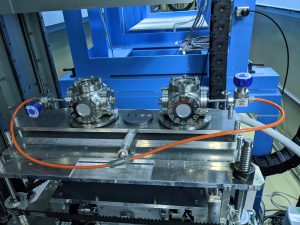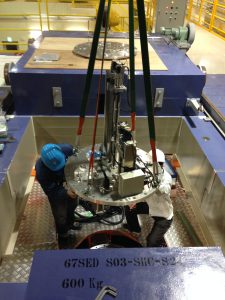On this page, we will introduce you some of the main equipments we use in our laboratory. We also use neutron and radiation facilities as needed.
Material Synthesis Equipment
Electric Furnaces
There are tube furnaces and muffle furnaces to synthesize inorganic materials. We synthesize them at the reaction temperatures ranging from 100 to 1750 °C. All tube furnaces are equipped with a flange to control the synthesis atmosphere.
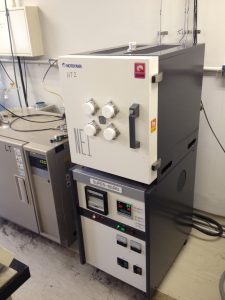
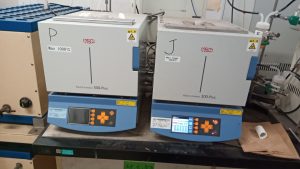
High Energy Ball Mill Equipment
To synthesize materials by solid phase method, reagents need to be ground and mixed. In particular, some materials cannot be synthesized without amorphization by mechanical mixing and mechanochemical reactions. For this reason, we have installed multiple ball mill equipment to ensure that experiments can proceed smoothly.
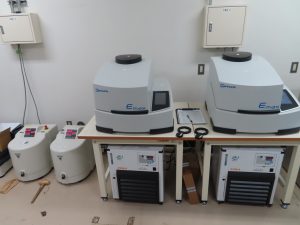
High Quality Thin Film Synthesis System
A laser ablation device is a synthesis device that is actively used to create epitaxial thin films, which are the materials of lithium batteries and fuel cells. The RHEED devices installed inside the chambers make it possible to monitor the conditions of each layer during the synthesis. One of film formation chambers is directly connected to an Ar-filled glove box, which makes it possible to create batteries without exposing the materials to the air. In our group, there are two laser oscillators and five film formation chambers.
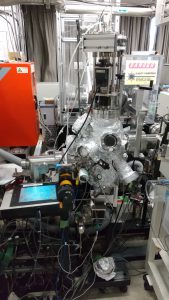
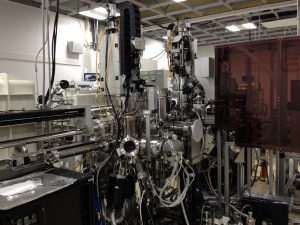
Supttering Equipment
Magnetron sputtering systems (3 units) are used for the synthesis of electrodes and solid electrolyte membranes for thin film batteries. Two units are connected to glove boxes and one unit is connected to a laser ablation system via a load lock chamber. The system is designed for non-atmospheric exposure and continuous film formation. Since the system can be used for various thin film syntheses, it is in full operation.
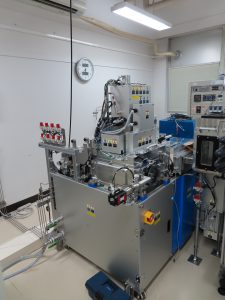
High-Pressure Synthesis Equipment
The cubic-anvil type high-pressure apparatus is used to synthesize materials under high pressures of 30,000 to 70,000 atmospheres. 180, 250, and 400 ton units are in operation. There are many advantages, such as the ability to synthesize new materials that cannot be obtained by normal pressure synthesis, and the ability to complete the synthesis in a short time.
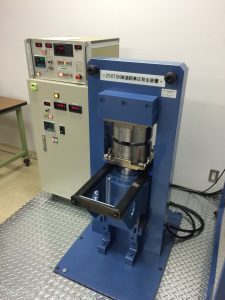
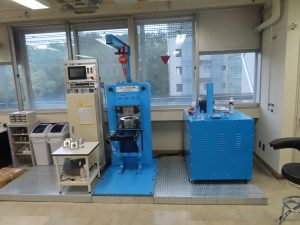
Glove Box
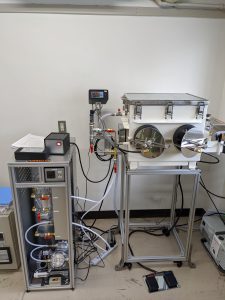
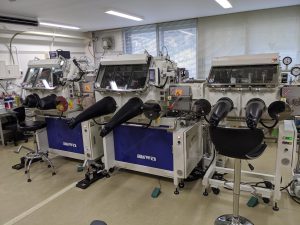
Structural Analysis Equipment
X-ray Diffraction
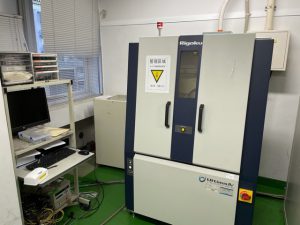
Electron Microscope
2 units of scanning electron microscopes (SEM/EDX) are used to evaluate the morphology and mixing state, and compositional distribution of samples. As a composite material consisting of an active electrode and a solid electrolyte is used in all solid-state batteries, the SEM/EDX system has become indispensable to investigate whether the reaction area is sufficient. We have introduced instruments with different resolutions and use them together according to the sample to be observed. Batteries can be introduced directly into the vacuum chamber for SEM observation during charging and discharging.
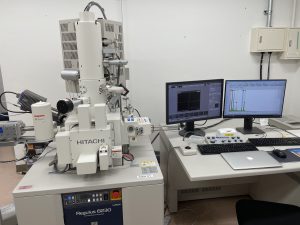
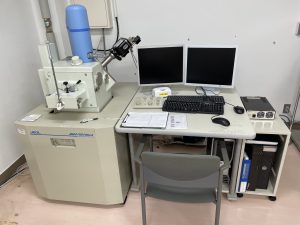
Probe Microscope
2 units of scanning probe microscopes are used to investigate nanoscale morphology of epitaxial film surfaces. We evaluate whether the films have sufficient smoothness and uniformity as a model reaction field for interfacial reaction analyses. Recently, we have introduced a cross-sectional polisher, which enables us to evaluate the morphology and physical properties of pellet-type materials.
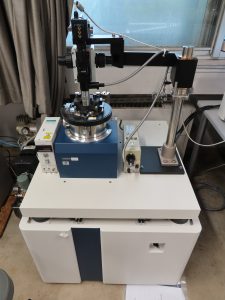
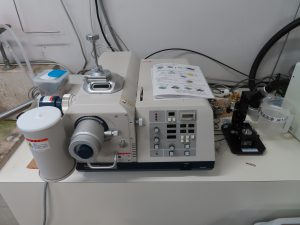
Raman Spectroscopy
The Raman spectrometer was introduced to investigate the local structure of materials, and when used in conjunction with X-ray diffraction measurements, it allows us to understand both the average and local structures of materials.
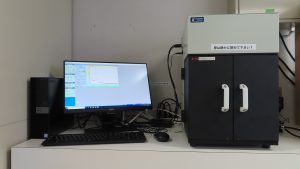
Particle Size Distribution Analyzer
We introduced this system to study the particle size of various materials. Understanding particle size distribution is very important because battery performance can vary tremendously depending on particle size and its distribution.
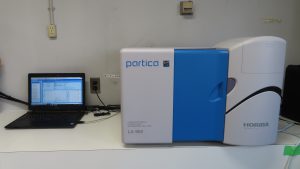
Physical Property Evaluation Equipment
Electrochemistry
We have electrochemical charge/discharge devices and potentio-galvanostat systems with AC impedance analyzer. They are very common equipment used in electrochemistry laboratories.
With many channels available, we evaluate the performance of materials and devices while controlling various parameters such as temperature, atmosphere, and pressure.
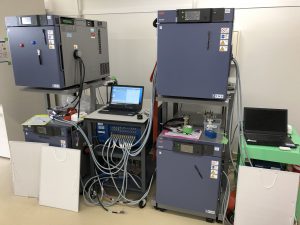
Low Temprature Impedance Measurment System
Sulfide solid electrolytes have low grain-boundary resistance, so it is difficult to separate the bulk contribution from the impedance spectra. To solve this problem, we combine an impedance analyzer that can measure from a high frequency of 100 MHz with a cryostat to perform precise measurements in the low temperature range and separate the resistance components.
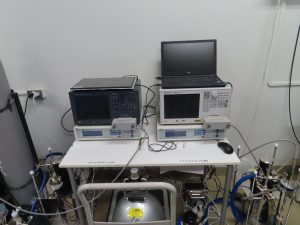
SQUID
A SQUID is used to evaluate the magnetism of materials. Because of the high cost of liquid helium, it is painful that we have to limit the usage of this device.
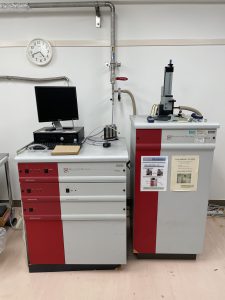
TG-DTA
Differential thermal analysis is used to investigate the phase transition behavior of crystals, which is one of the basic information of material synthesis, by observing the heat flow and the weight changes of materials when the temperature goes up and down. By viewing the data in combination with high temperature X-ray diffraction measurements, we can deepen our understanding of the behavior for developed materials.
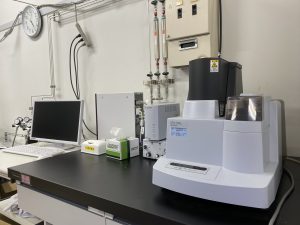
Joint-Use Facilities
SPring8
・Direct observation of the interfacial structure is extremely important for elucidating the electrochemical reactions in batteries. Surface diffraction and reflectivity measurements are used to investigate changes in crystal structure and morphology.
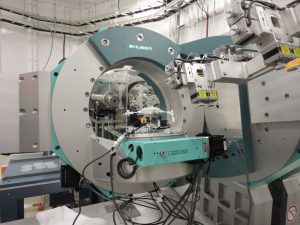
・Large-scale synchrotron radiation facility SPring-8 BL02B2, BL19B2 Powder X-ray diffractometer.
・Understanding the crystal structure is essential for materials development. High intensity X-ray diffraction data using monochromatic X-ray can be analyzed for revealing the detailed crystal structure, which shows important guidelines for the next material design.
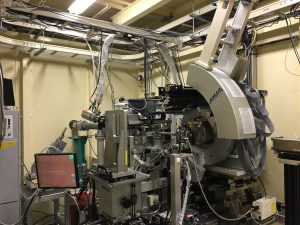
・Large-scale synchrotron radiation facility SPring-8 BL28XU Hard X-ray photoelectron spectrometer
・By understanding the electronic structure of materials and interfaces, we can elucidate reaction mechanisms and obtain guidelines for improving performance. Since hard X-rays can provide information on buried interfaces, we are conducting experiments to directly observe the changes of electronic structure at the electrochemical interfaces during charging and discharging.
J-PARC
・J-Parc is a neutron facility (J-PARC) with TOF-type powder diffractometer [Super HRPD(BL08), SPICA (BL09), iMateria (BL20)] and Soft Interface Analyzer [SOFIA (BL16)]. With a neutron diffractometer, the locations and the amount of Li and H in crystals can be identified, while they are difficult to be investigated by X-ray.
